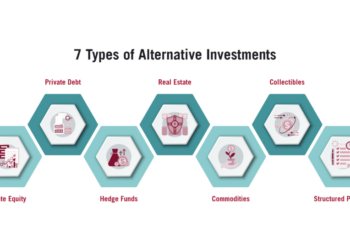
In the dynamic world of finance, effective financial portfolio management stands as a cornerstone for individuals and institutions seeking to harness the potential of their investments. A well-structured and strategically managed portfolio not only maximizes returns but also mitigates risks, ensuring long-term financial stability. In this comprehensive guide, we will delve into the depths of financial portfolio management, exploring its significance, key principles, diverse strategies, challenges, and the role of technology in shaping the future of portfolio management.
Understanding the Significance of Financial Portfolio Management
Financial portfolio management is the art and science of strategically selecting, allocating, and managing a diverse range of assets with the aim of achieving specific financial goals. Whether you’re an individual investor looking to grow wealth or an institutional investor responsible for managing funds, an effective portfolio management strategy is essential to optimize returns while aligning with risk tolerance.
Key Principles of Financial Portfolio Management
- Diversification: The principle of not putting all your eggs in one basket holds true. Diversifying investments across various asset classes reduces the impact of poor performance in a single area.
- Risk and Return Tradeoff: Portfolio managers aim to strike a balance between potential returns and associated risks. Higher-risk investments may offer greater rewards, but they come with a commensurate level of risk.
- Asset Allocation: Allocating investments across different asset classes, such as stocks, bonds, and cash equivalents, is a pivotal aspect of portfolio management. The right mix depends on an investor’s risk profile and financial goals.
- Rebalancing: As market conditions change, the composition of a portfolio may deviate from its intended allocation. Rebalancing involves periodically adjusting holdings to maintain the desired asset allocation.
Diverse Strategies for Financial Portfolio Management
- Passive Investing: This strategy involves mirroring the performance of a market index through investments in exchange-traded funds (ETFs) or index funds. It aims to match market returns rather than outperform them.
- Active Investing: Active portfolio managers seek to outperform the market by making strategic decisions based on research, analysis, and forecasts. This approach requires ongoing research and monitoring.
- Value Investing: Value investors seek undervalued stocks that they believe will appreciate over time. They analyze financial statements and seek out companies trading below their intrinsic value.
- Growth Investing: Growth investors focus on companies with strong growth potential, even if their current valuation appears high. This strategy often involves investing in industries with rapid expansion.
- Income Investing: Income-focused portfolios prioritize generating regular income through dividends, interest, and other distributions. Bonds and dividend-paying stocks are common in income portfolios.

Challenges in Financial Portfolio Management
- Market Volatility: Financial markets are inherently volatile. Portfolio managers must anticipate and respond to market fluctuations to optimize returns and mitigate risks.
- Economic Uncertainty: Economic shifts impact asset performance. Portfolio managers need to adapt strategies to accommodate changing economic landscapes.
- Regulatory Changes: Evolving regulations can impact investment decisions and compliance requirements. Portfolio managers must stay informed about regulatory changes and adapt strategies accordingly.
- Behavioral Biases: Investors often make irrational decisions based on emotions or cognitive biases. Portfolio managers need to guide clients toward rational decisions aligned with long-term goals.
Leveraging Technology in Financial Portfolio Management
In the digital age, technology has revolutionized portfolio management:
- Robo-Advisors: Automated platforms use algorithms to create and manage portfolios based on client risk profiles and goals, democratizing access to professional advice.
- Data Analytics: Advanced data analytics enable portfolio managers to analyze historical data, market trends, and macroeconomic indicators to make informed investment decisions.
- AI and Machine Learning: AI-driven algorithms can analyze vast amounts of data to identify patterns and predict market movements, aiding in strategy formulation.
- Risk Management Tools: Technology offers sophisticated risk management tools that help portfolio managers assess and mitigate risks more effectively.
Role of Financial Portfolio Management in Retirement Planning
For individuals, financial portfolio management is intrinsically linked to retirement planning:
- Risk Tolerance Assessment: Portfolio managers evaluate an individual’s risk tolerance to determine an appropriate investment strategy aligned with retirement goals.
- Diversification for Stability: Proper asset allocation ensures a balanced mix of investments to safeguard against market volatility during retirement years.
- Income Generation: Income-focused investments play a crucial role in generating consistent income streams for retirees.
- Preservation of Capital: As individuals transition into retirement, portfolio management focuses on preserving capital while providing sustainable income.

In Conclusion: Navigating the Path to Financial Prosperity
Financial portfolio management is an intricate dance of strategy, analysis, and adaptability. Whether you’re an investor aiming to optimize returns, a fund manager tasked with safeguarding institutional assets, or an individual planning for retirement, mastering the principles of portfolio management is essential. By understanding diversification, risk management, and the role of technology, you can navigate the complexities of the financial landscape and pave the way to long-term financial prosperity. In a world of evolving markets and opportunities, effective financial portfolio management remains the compass that guides you toward your financial goals.





















Discussion about this post